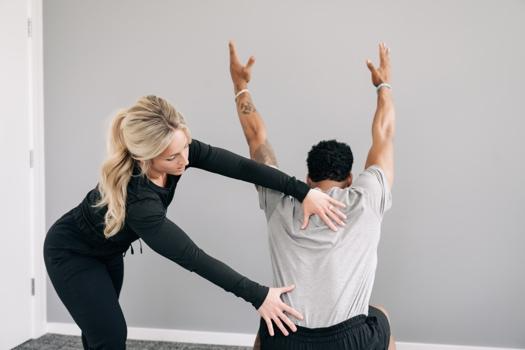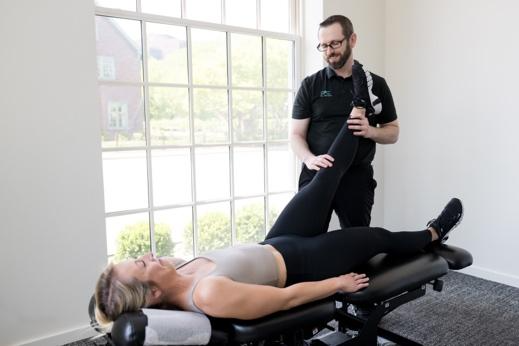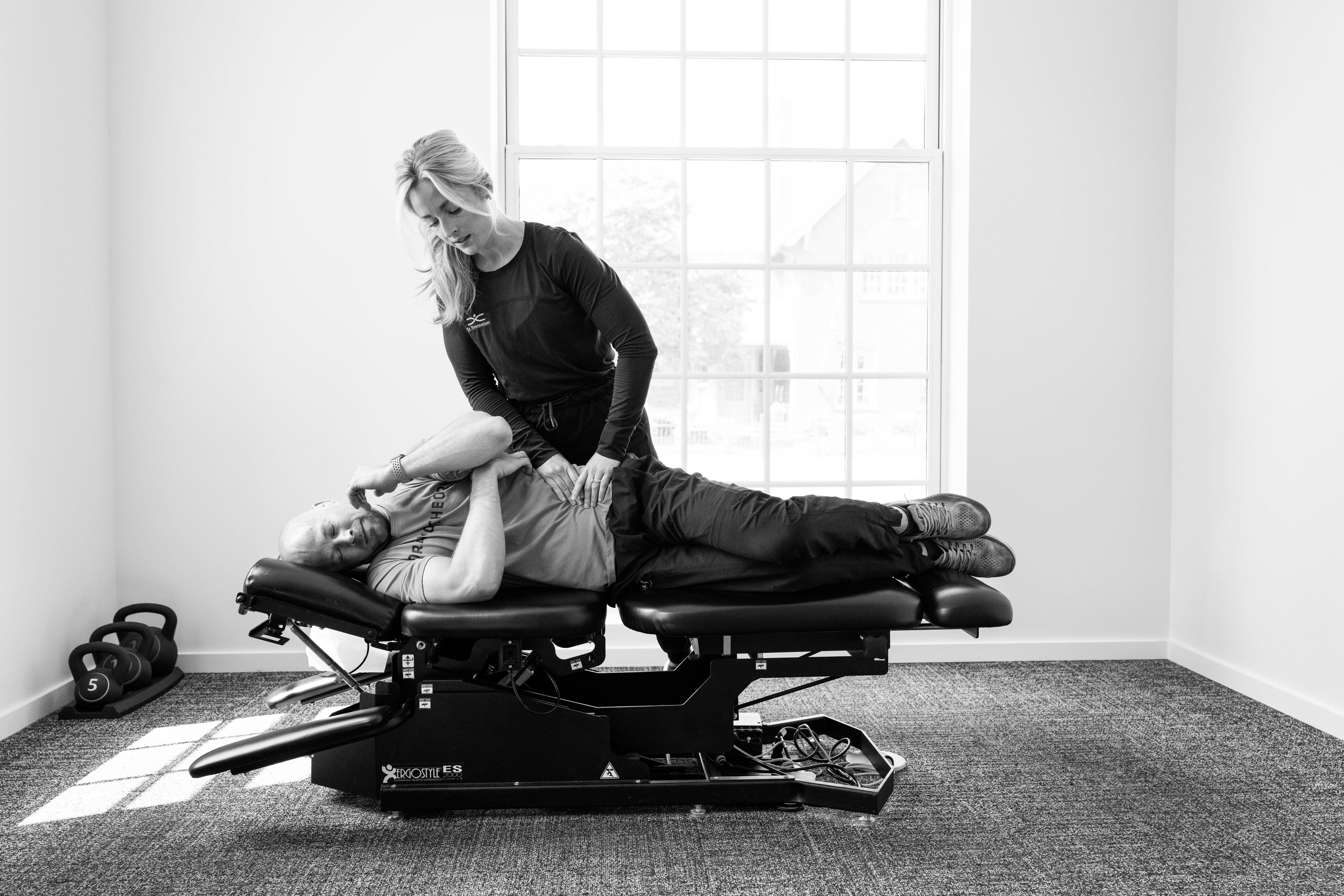Lower back pain is as common as finding mismatched socks in your laundry—everyone deals with it at some point, and it’s often puzzling. When you think about causes, your mind might jump to “lifting something heavy,” “sitting too long,” or perhaps “I slept funny.” But let’s step away from the back for a moment and give those underrated heroes—your hips—their moment in the spotlight. Spoiler alert: Sometimes, your back pain isn’t a back problem at all; it’s a hip problem.
The Hip-Spine Connection
Let’s start with a little anatomy lesson because who doesn’t love some juicy details about our bodies? The hips and lower back are closely linked. When one part of this interconnected system starts to misbehave, it can affect the entire structure. Let’s envision a lively band: if the drummer (the hips) is out of rhythm, the whole band (the spine) sounds off, right? In medical circles, this relationship is sometimes referred to as the **hip-spine syndrome**—a fancy term for the dysfunction at the hip potentially causing problems in the lower back. Indeed, according to research published in PubMed, tightness or issues in hip mobility can lead to compensatory movements that stress the lower back. This is like trying to run with a pebble in your shoe: it’s not really the shoe that’s the problem but rather that pesky little rock causing all the trouble.

The Weekend Warrior’s Dilemma
Let’s bring this theory to life with a story about our friend, “Jacob.” Jake is your typical weekend warrior: he spends five days a week at his desk staring at spreadsheets, and come Saturday, he’s ready to lace up those running shoes and sprint through the park, all ready to channel his inner Usain Bolt. However, Jake finds himself nursing an annoying low back pain that just won’t quit after his Saturday morning jog. After several weeks of frustration (and a few too many visits to his trusty heating pad), Jake finally decided to do something about it. A friend recommended he see a rehab specialist, who quickly threw out the idea that maybe—just maybe—his hips were playing a role in this back pain saga. Upon assessment, the therapist pointed out that Jake had restricted hip outward rotation. His hips were feeling like a rusty door hinge, and this was causing compensation in his lower back when he ran. This compensation happened to over-engage his lumbar musculature and create chronic tightness leading to the misdirection of back pain that Jake thought was the root cause. With some targeted hip mobility exercises and strength training focused on opening up the tight gluteal and groin muscles, Jake turned the corner. Just like that, his back pain started to ease up. Within weeks, he was not only running without discomfort but also marveling at how much smoother his movements felt. Doesn’t it feel fantastic to know that sometimes the source of pain is just a little exploration away? Playing with internal and external hip rotation and priming his joints/muscles with a combination of precise exercises made all the difference Jake learned that he needed to check in with his hips and give them the overdue TLC they deserved. And just like that, a weekend run became a pain-free triumph!
Understanding Hip Mobility
So, let’s break down what we mean by “hip mobility.” This refers to the ability of your hip joints to move through their full range of motion. When your hips are mobile, they can bend, twist, and rotate without difficulty. This is essential not just for running, but for almost every activity you do, from sitting in that swivel chair in the office to reaching for the remote control on the couch. But when that mobility is compromised—due to tight muscles, injury, or even just poor sitting habits—your body begins to compensate. And guess what? This compensation can lead to excessive stress on the lower back. It’s like when your car gets a flat tire and you keep driving on it; eventually, something else is going to break too! If Jake’s case was misdiagnosed from the beginning and the hips were never properly examined, it would have been hard to tell how long our runner could have been sidelined from his favorite hobby.

Movements that Matter
In an ideal world, we’d be fluid, agile, and able to move like the cheetah that lives inside our soul. But here’s where things can go sideways. Common culprits of limited hip mobility include:
- Sedentary Lifestyle: If you spend most of your day seated (hello, desk job!), your hip flexors can tighten up and restrict movement.
- Overtraining: We love a good workout, but doing too much of one thing, like running without stretching and not supplementing with recovery modalities can lead to stiffness.
- Poor Form: Ever watched someone run or lift weights and thought, “Yikes, their form is terrible”? Shaky biomechanics can lead to that pesky compensation we discussed earlier.
- Injuries: A prior injury can lead muscles to tighten up in protective compensatory ways, limiting your range of movement.
- Increasing workout challenge and over-doing it before the body can handle the change: This is common with those looking to lose weight, those recovering from previous injury, or procrastinators that waited until two weeks before competition to start training. Loading and capacity is a delicate balance that needs to be respected. But you won’t be that person!
Simple Tests for Hip Mobility
Don’t worry! You don’t need to schedule an expensive MRI just to check if your hips are misaligned. There are a few simple tests you can do at home. Here are a couple of them:
- The Thomas Test: Lie on your back at the edge of a bed or couch, pull one knee to your chest, and let the other leg hang off the edge. If your hanging leg remains elevated and doesn’t touch the surface, your hip flexors may be tight!
- Hip External Rotation Test: Sit on a chair, place one ankle on the opposite knee, and allow the knee to fall outward. If it doesn’t drop much, you may want to work on loosening up that hip.
- Kneeling Heel Sit: kneel on a soft surface, point your toes and sit your hips down to your heels. It you feel restriction sitting into this while bringing your chest down to your thighs, hip flexion restriction and glute tightness needs to be addressed.

The Road to Better Hip Mobility
Now that we’ve established that your hips might just be the culprits behind your back pain, let’s explore how to restore their function. Here are a few healing practices you can try:
- Stretch It Out: Focus on stretching hip flexors, glutes, and hamstrings. Passive and dynamic stretching with 90/90’s, half kneeling forward leans and figure 4 stretches are a great start. Yoga poses like the pigeon pose or low lunge can be very helpful.
- Foam Rolling and Lacrosse ball compression: This isn’t just for elite athletes. Rolling out those tight muscles around your hips can help release some tension and improve blood flow.
- Strength Training: Building strength in your hips can provide much-needed stability. Exercises like squats, lunges, side bridges, clamshells and warrior pose should be part of your routine to keep those joints/tissue happy.
- Mobility Drills: Incorporate mobility exercises like “circumduction” hip circles and leg swings into your workouts to make sure your hips remain limber and ready for action.
- Seek Professional Guidance: If you’re unsure where to start, consulting with a physical therapist or certified trainer can help tailor a program just for your needs. Many times, motor control dysfunctions are present and a physician’s guidance toward proper tissue stabilization and engagement is necessary to push you past the plateau.

Final Thoughts
It can be a hips issue, not always a back issue! The next time you experience lower back pain, take a moment to check in with your hips. You might just find that the tension or discomfort you’re feeling is directly related to those unhappy hip joints. Remember, back pain isn’t always a back problem. Sometimes, it’s really all about your hips! So, throw your detective hat and get ready to investigate. It may not be the most glamorous aspect of health and fitness, but giving your hips the attention they deserve could pay off big time. No more back pain, just happy, pain-free movement, and maybe even a sprint through the park on a beautiful Saturday morning (without the heating pad waiting at home)! Let’s connect those dots across your body. After all, if Jake can overcome his back pain with a dedication to hip hygiene, so can you! Don’t hesitate—take charge of your hip health today. Unleash the full potential of your lower back’s “sidekick.” And remember, your hips don’t lie…but they might be trying to tell you something about that lower back pain. Let’s get moving!
Content Provided by Dr. Parker Grundman














